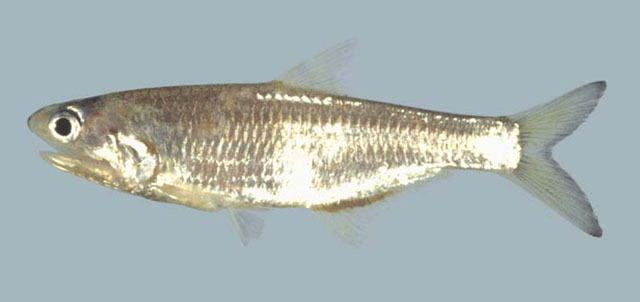| Engraulidae (Anchovies), subfamily: Engraulinae |
| 15 cm TL (male/unsexed) |
|
pelagic; freshwater; brackish |
| Central and South America: lower parts of rivers from Trinidad and eastern Venezuela south to Para, Brazil. |
|
Dorsal spines (total): 0-0; Anal spines: 0-0; Anal soft rays: 20-25. Snout moderate and pointed, tip well above center of eye; maxilla short, tip blunt, failing to reach articulation of lower jaw by about 1/3 eye diameter, not extending behind end of second supra-maxilla; sub-operculum with angular hind margin, not formed into a triangular projection; gill rakers fine and slender. Silver stripe along flank, up to 1.5 eye diameter at widest (Ref. 189). Lacks membrane connecting the gill covers across the isthmus, longer and narrower cheek, higher dorsal and longer pectoral. Deep body and numerous gill rakers (Ref. 37032). |
| Occurs in estuaries and rivers to collect food. At certain months of the year, mainly Feb.-Mar., this fish is very abundant and forms an important part of the fisheries (Ref. 12225). |
|
Least Concern (LC); Date assessed: 06 March 2017 Ref. (130435)
|
| harmless |
Source and more info: www.fishbase.org. For personal, classroom, and other internal use only. Not for publication.

